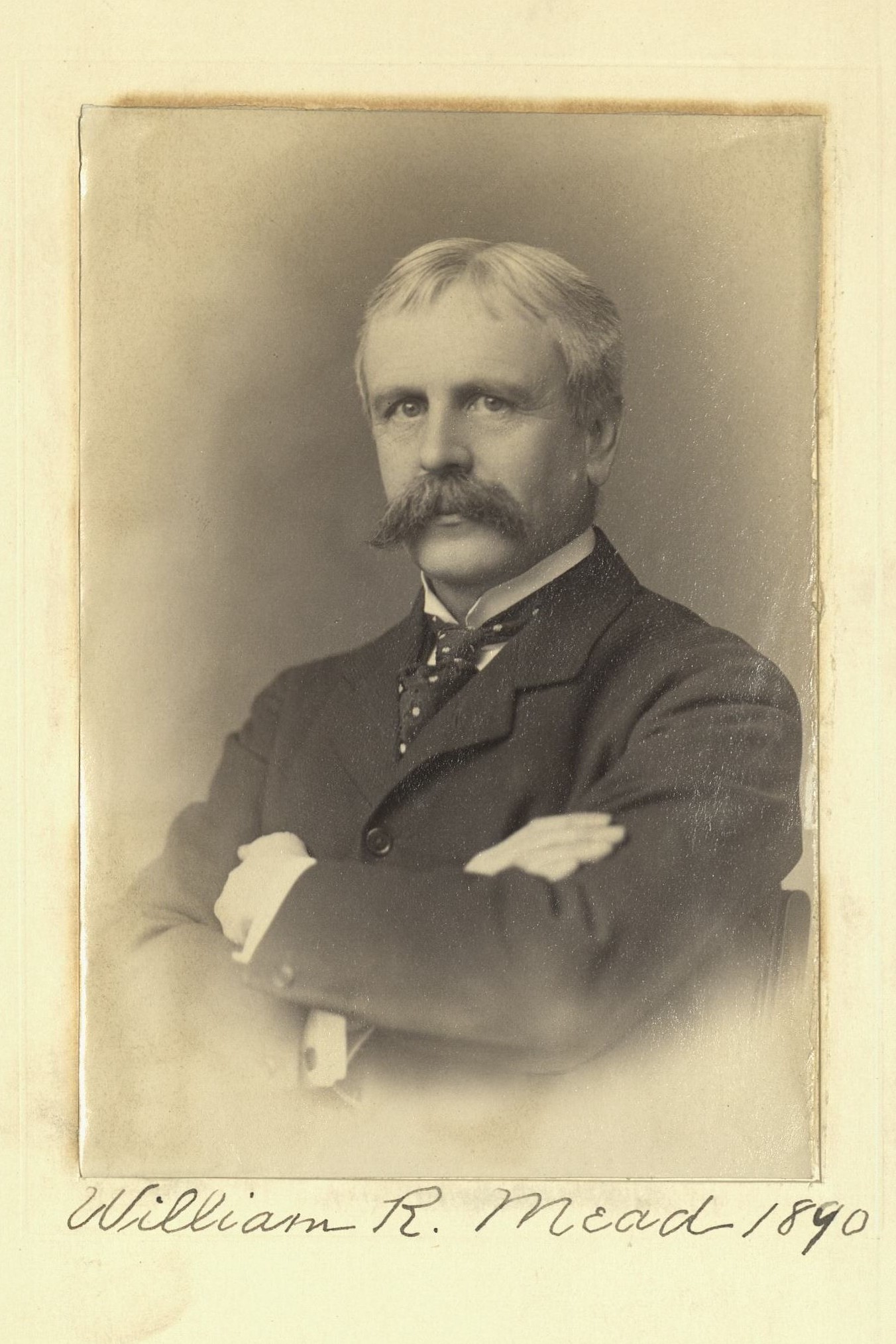Architect
Centurion, 1890–1928
Born 20 August 1846 in Brattleboro, Vermont
Died 19 June 1928 in Paris, France
Buried Campo Cestio , Rome, Lazio, Italy
, Rome, Lazio, Italy
Proposed by William Bispham and J. Hampden Robb
Elected 5 April 1890 at age forty-three
Proposer of:
Seconder of:
Century Memorial
When William Rutherford Mead strolled smilingly into the Club, every one stopped him for a word of good-humored conversation, and there never seemed to be such demands on his time as would interfere with a comfortably prolonged exchange of views. Mead was a busy man, and highly efficient in all the work to which he laid his hand; but his business never hurried him. In the architectural partnership of which he was for half a century a member, it was Mead’s serenity of temperament which linked together the highly contrasting individualities of Charles McKim and Stanford White. The public’s eye was directed to the professional achievement of those celebrated artists, but Mead shaped the course and steered the ship. Whether in his active days with that distinguished house, or in his ten-year presidency of the Amherst College Alumni, or in his nine-year service as head of the American Academy at Rome, or in his other varied public services, the day’s work left abundant opportunity for genial leisure and life was a pleasantly comfortable experience. Mead was himself an architect of taste and skill and sound traditions; fifteen years ago the Academy of Arts and Letters awarded him its gold medal for “distinguished service in the creation of original work in architecture.” But it was his high executive capacity, unostentatiously displayed in directing and harmonizing the genius of his two remarkable colleagues, which made the deeper mark on his profession. To have also rounded out a professional career with not only the respect but the affection of every one whose path had crossed his own, is a distinction not given to many of us.
Alexander Dana Noyes
1929 Century Association Yearbook

